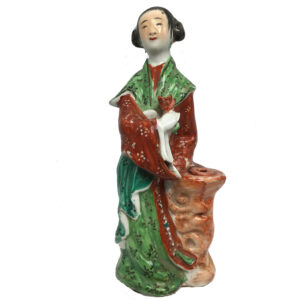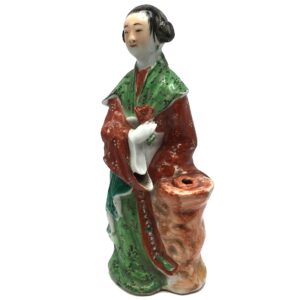Vintage Porcelain Elegant Lady with Rose, Chinese Republic (17036JRK) $240
$240.00Ht: 9.75″ W: 3.5″ D: 2.5″ | FREE SHIPPING WITHIN CONTINENTAL U.S. !
This Chinese Republic Period delicate porcelain figurine holds a rose at her heart in her right snow white hand, her left arm covered by her shawl resting on a waist-high decorative vase with an opening to hold incense (joss) sticks. Her shawl drapes over her shoulders and lower garment with floral motifs extending to the beaded belt at her waist. The sweet facial expression with slightly smiling bowed lips is framed by her piled hair looped in a chignon over each ear. Given her luxurious garments and accessories, she is an aristocratic woman. The rose was often used on porcelains during this period, representing eternal spring.


